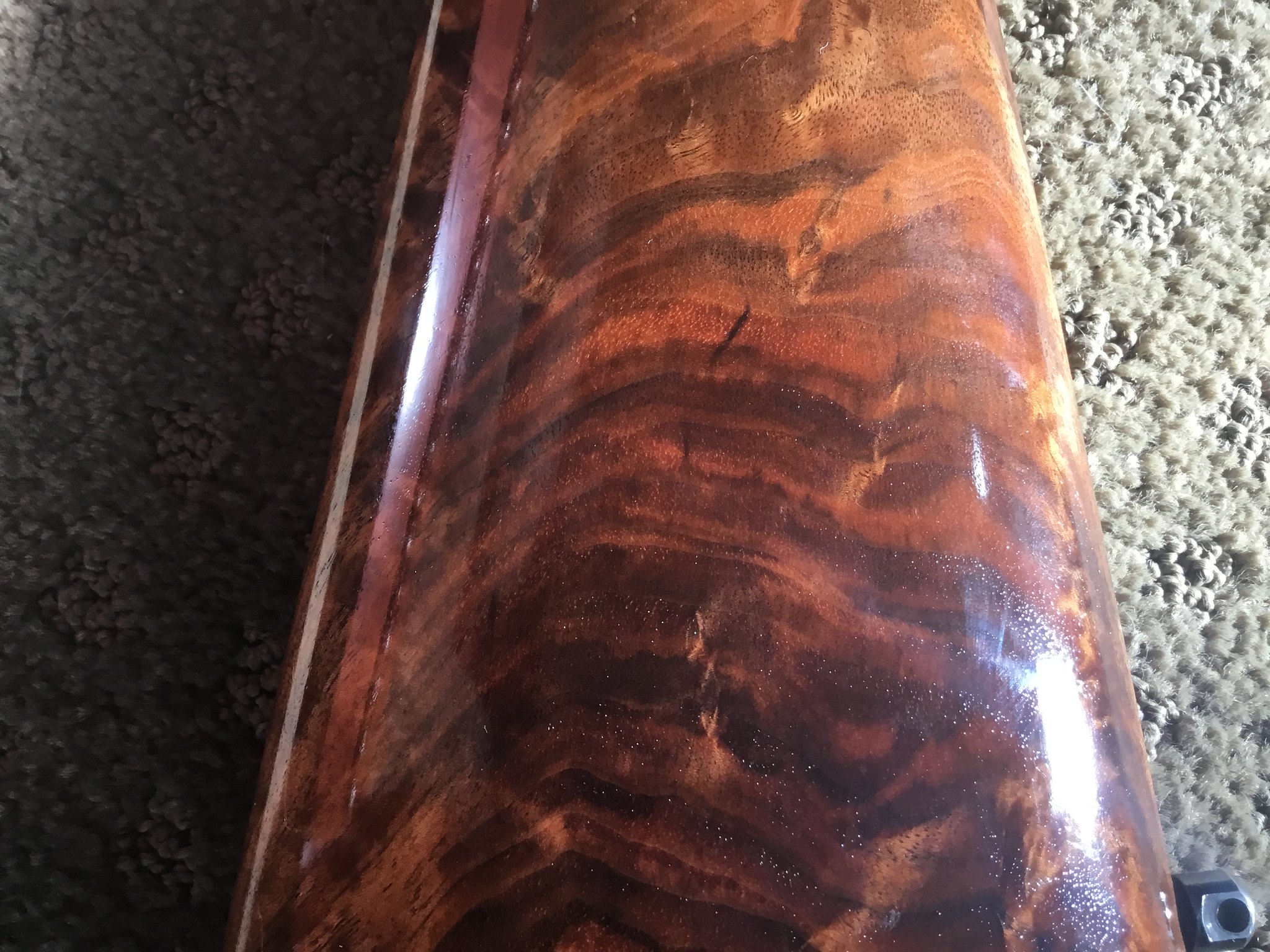This is my first time trying to finish a walnut stock following Dave Person’s method using Polymerized Tung Oil. As I expected, it’s not turning out nearly as good as his examples. Imagine that
I’ve included some pictures of what is going on. I made a slurry with sand paper and finish, let dry, sanded, cleaned the stock and am now on my second coat of finish. I ruffed up the finish between coats and let them dry. Now I am seeing dull spots in some of the pours.
Any thoughts and suggestions would be welcome.
Duane
I’ve included some pictures of what is going on. I made a slurry with sand paper and finish, let dry, sanded, cleaned the stock and am now on my second coat of finish. I ruffed up the finish between coats and let them dry. Now I am seeing dull spots in some of the pours.
Any thoughts and suggestions would be welcome.
Duane









